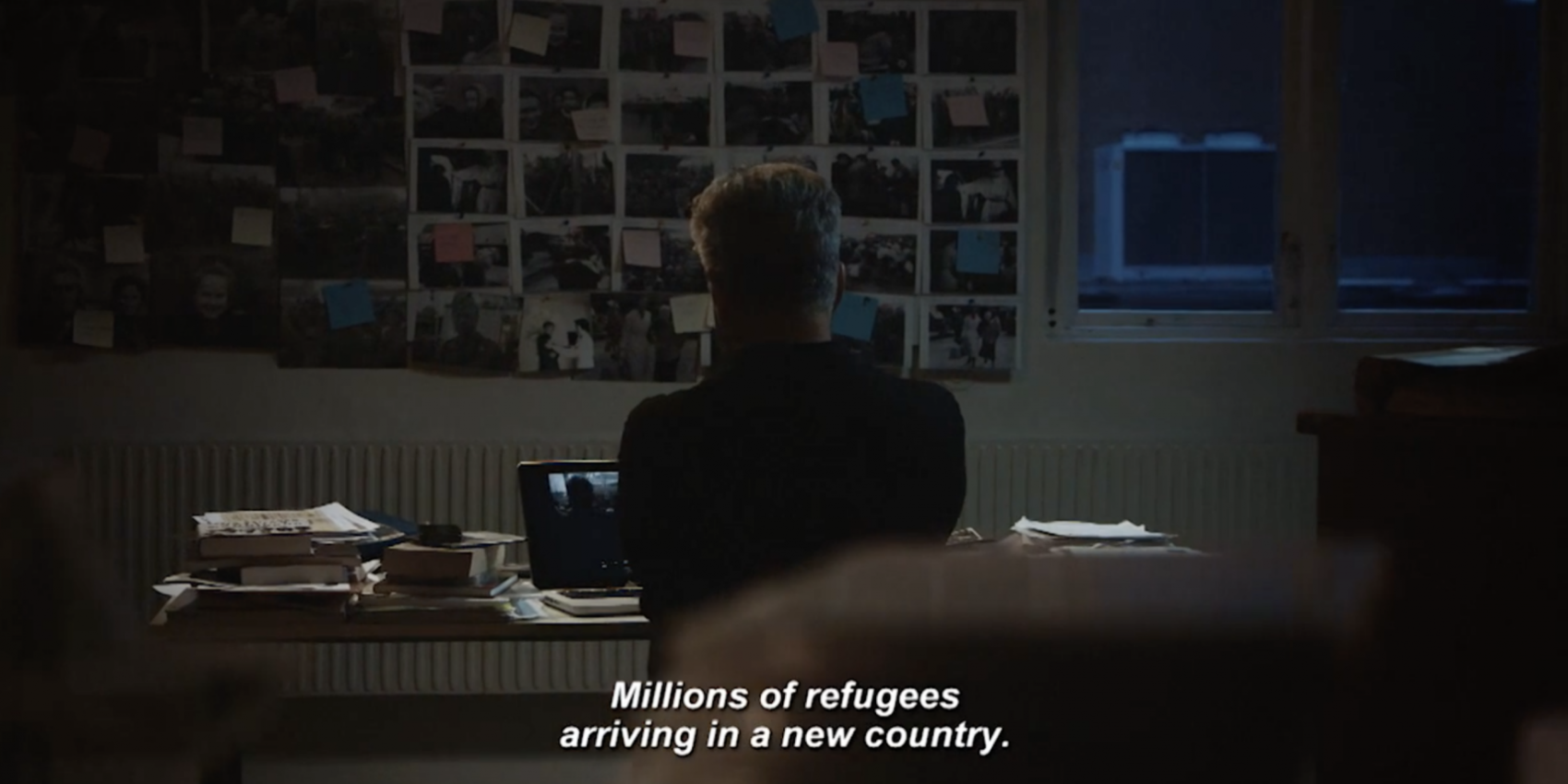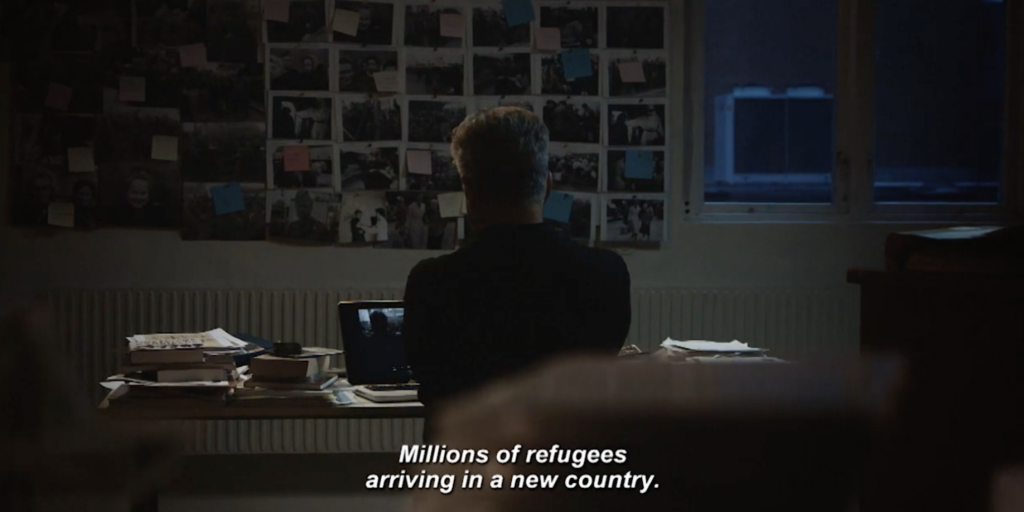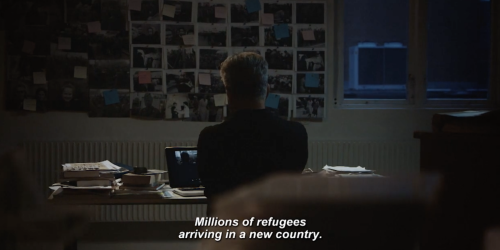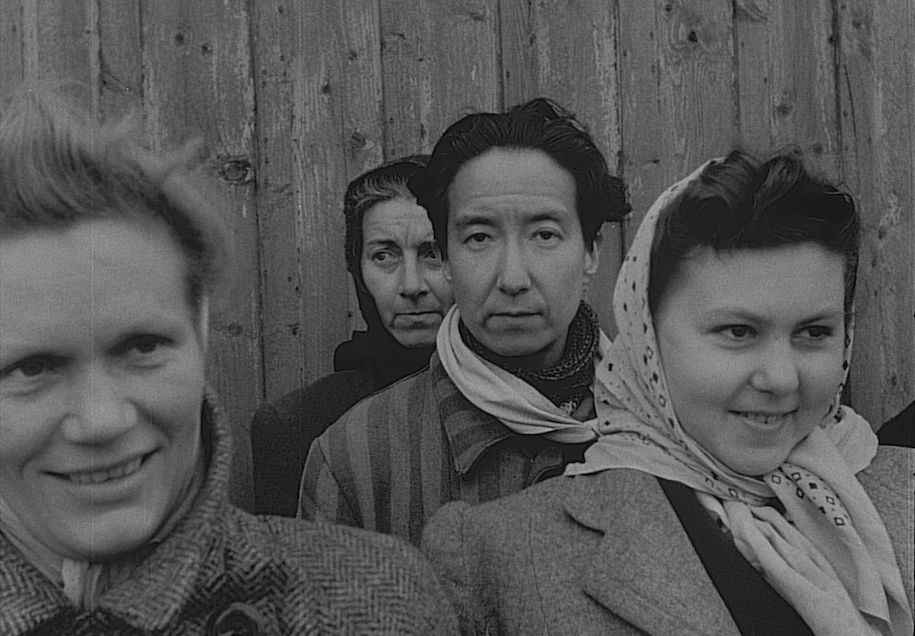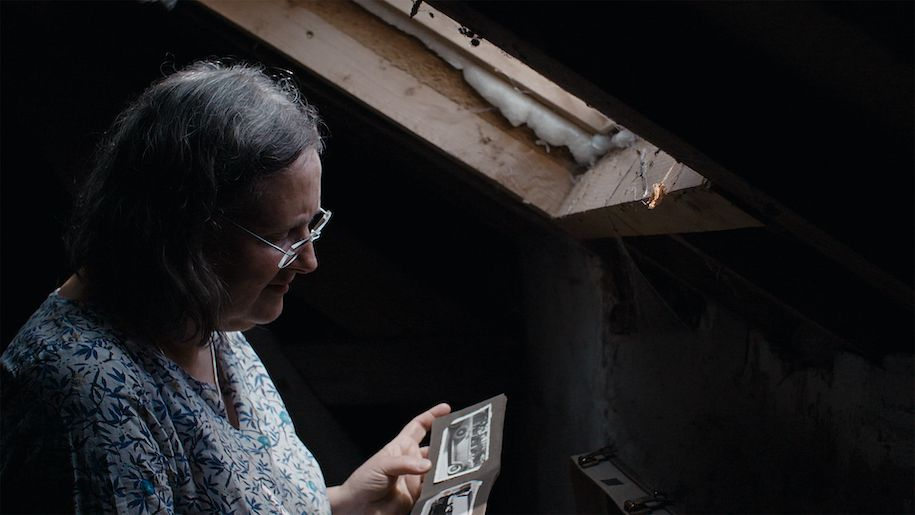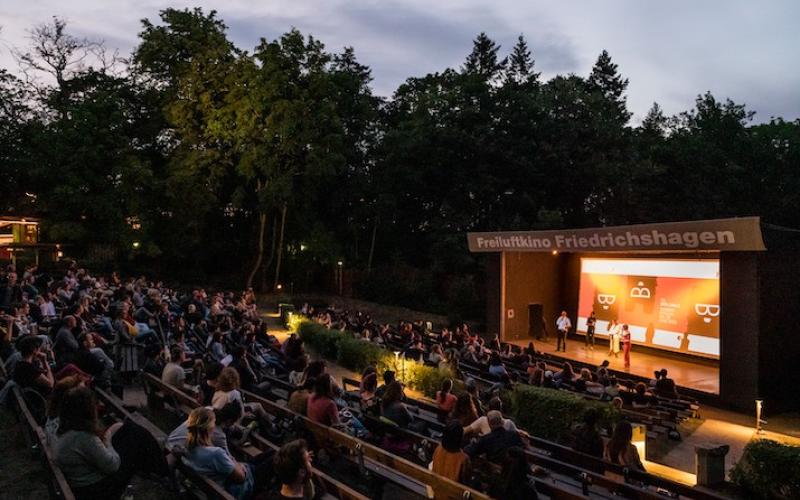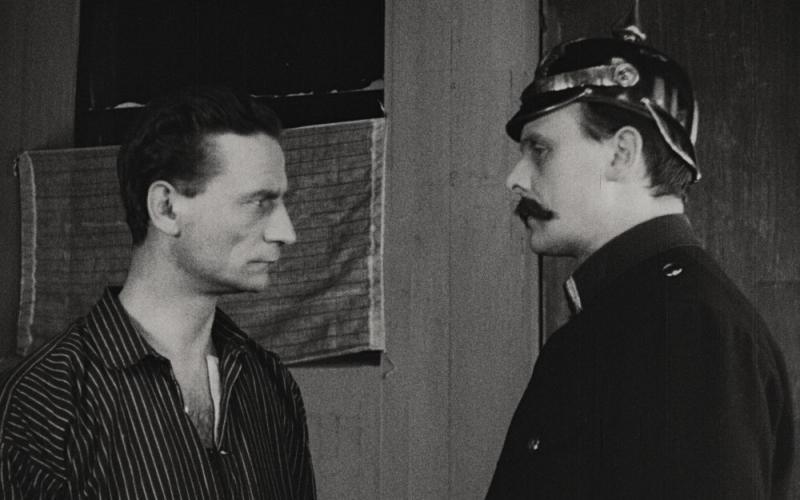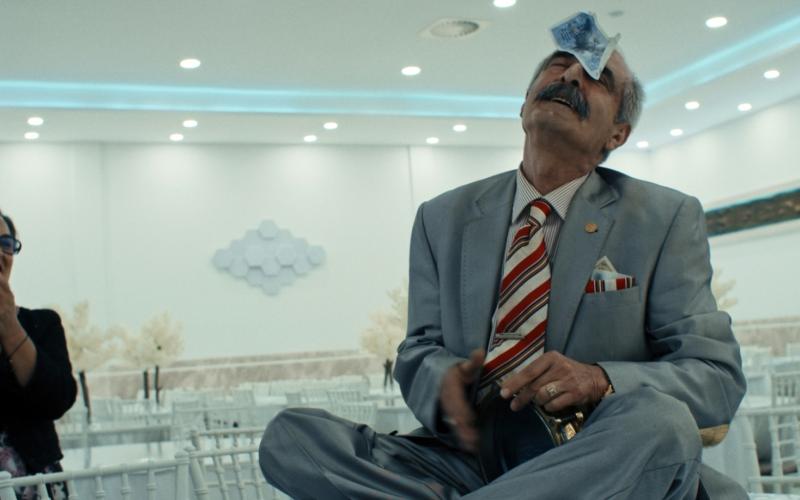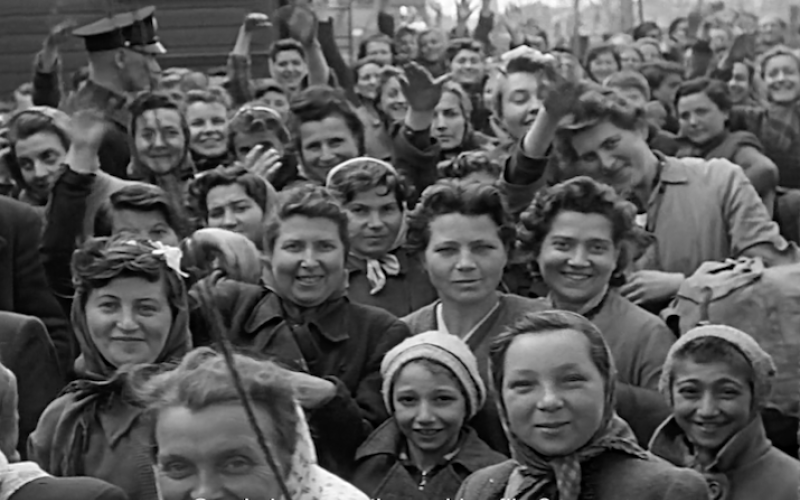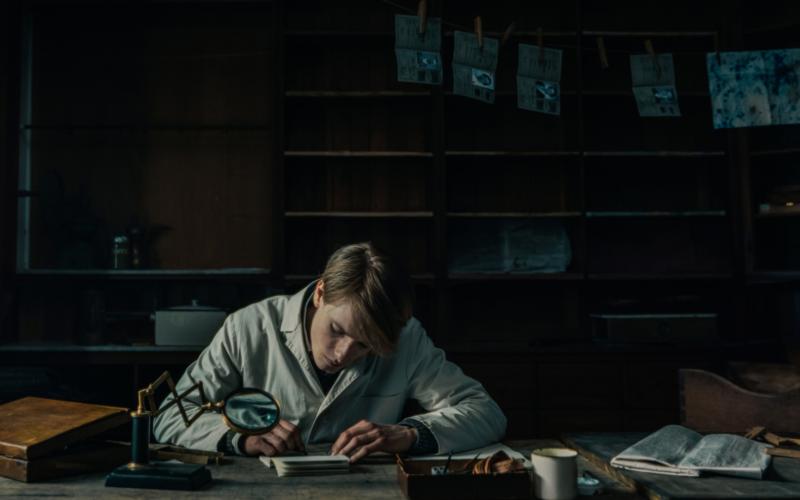The Swedish director and producer Magnus Gertten has made a total of fifteen documentaries for Swedish and international television which have been broadcast and screened at festivals and were cinematrical released in more than 60 different countries and won numerous awards. Gertten worked for several years as a television and radio journalist before turning to filmmaking in 1998. He works as a director, producer, narrative consultant, and adviser for his film production company Auto Images. Alina Müller and Rebecca Wegmann talked with the Swedish director about his latest trilogy and his experiences interviewing Holocaust-survivors.
zeitgeschichte|online: Working as a director of documentary films you have spent many years studying biographies of the victims and the survivors of the Shoah. What was your motivation to start your work on the subject?
Magnus Gertten: I became fascinated by this little film reel, a news journal that was screened in Swedish theaters and cinemas in May 1945. This film is quite famous. It is a Swedish narration with a voice over. It is mainly based on the story of the Swedish Red Cross Mission traveling to Germany during the last weeks of the Second World War, trying to – because that was the deal the Swedish made with the German Nazi leaders – rescue the Scandinavian prisoners in the camps first. But while they were there, they brought back a lot of other prisoners as well.
At first, I did not think I would do anything with the film reel – because the Second World War is the number one theme on the list of topics to avoid for a documentary filmmaker. There are already a lot of films released on this era.
I am not interested in that, because I am an artist. I am not drawn to topics; I am drawn to stories. I want to tell unique stories. Therefore, my first step is to find the possibility of a unique personal story. I am working with character driven documentaries. Which means that the development of the character is usually the first thing that I am interested in exploring.
What you need as a filmmaker is – you become fascinated in something. And I became fascinated in investigating the secrets of this film reel.
I tried to avoid telling the big story of the Holocaust and the Second World War. And for me my movies are not at all typically Holocaust movies or Second World War movies.
My personal angle is: as a filmmaker I was not looking for it as a topic. But then I saw these faces. Then I put up this impossible challenge for myself: Is it possible to find out who they are?
ZO: As viewers of your movies, we hardly get any information about the process of your research, we almost never see you interacting in front of the camera. What are your thoughts about showing or not showing your role as a moviemaker?
Gertten: Like books, documentaries could be about almost anything and they could be made in very different ways. The typical documentary with a visible director would usually be a very journalistic one. I am not into journalistic storytelling. I am into something else. That is the main reason why I am not so visible in my movies. Also, if I am going to be a part of the film – visible or through my voice – I need to talk about something that I have a very personal relationship to. What I am talking about must have a consequence for me. I can not appear in the film and discuss the relationship of Nelly Mousset-Vos and Nadine Hwang. It is not my world. But I can talk about me watching the archive film discovering things. I would not put myself into being a main character in a film about the Holocaust because that would be not morally acceptable. With reason you could ask yourself if that is correct to do? I do not like that.
So, my style when I am working, is very much about trying to tell a story without having this godfather perspective of a narrator who knows everything and can explain anything.
ZO: Talking about visibility, in what way do you think it is important to reshow the more shocking and naked scenes of the archive film?
Gertten: That is mainly the second movie from this trilogy called Every Face has a Name where I am using a way of storytelling that consists of me meeting people who are filmed on the most important day of their lives. I showed them the archive news reel film about the day when they were liberated, and they were arriving in Sweden to freedom. And of course, the magical thing is that they discover themselves in the film reel. My job is to create cinematic magic. I am not writing a journalistic report about how many people died in the camps and so on. I am a storyteller, I need to work like that.
I did not show any images from the camps to anyone. I usually avoid telling concentration camp stories. There are very few concentration camp stories in my films because it does not work. It creates a distance to the person I am trying to tell a story about. For me it is important not to show them as victims of cruelty. They are human beings like you and me. My main way of telling their stories is: I want to talk with them about a love story, about important things in their everyday lives or how they dealt with the trauma. My movies are about identity and all the fundamental questions related to it: About who you are, how it is to live a life, how you survive the worst things that might happen in your life. That is my base for discussions.
Regarding the archive film, I chose to show material from the moment when the survivors arrived in Sweden. There is some material that is a little bit tough. I would say, when it comes to nudity in almost all the cases it is about them getting showered. You have to realize within this film it has a positive meaning, not a negative connotation. The story behind it tells us that they were able to take a shower and get clean. That was one of the important reasons for showing it. It is a thin line though. If something might be slightly uncomfortable for the audience, I thought that scene was ok. In other documentaries you see bulldozers shoving away piles of corpses. People do not react to that. I have heard people complaining: “How can you show them when they take a shower?” That’s because they personally told me it was an important thing in their lives at that time. They were finally able to get clean and to start a new life.
ZO: How did you feel in the moments, when you connected a face in the archive film to a person of your research?
Gertten: First, it was very difficult to find the people behind the faces. When I saw the film reel for the first time, I thought it was completely impossible to find out any name. And then we found out that there were passenger lists for all the transports that came to Sweden. In the next step we found out that the main part of the images of the archive film must have been shot on a specific day: the 28th of April, 1945. We realized that it must have been April 28 because the passenger list from this day noted some new born babies that arrived with their mothers and this group of newborns was shown in the news reel as well. Then we started to check out the names on the passenger lists. Mainly women. Women usually get married and change their names, so it is very hard to google them. We started checking out Swedish newspapers from that time which helped us to identify Nadine Hwang and the little girl Irene Krausz-Fainman. In the beginning there were very few people we found.
When I was screening the first film on Swedish television suddenly people called me, and they said that they would recognize their mothers. Also, we had a screening at the Jerusalem Film Festival and afterwards at the Q&A there was a little lady in the audience raising her hand and saying: “I recognized myself in the material”. Suddenly a ball started to roll. So, we published the passenger lists on social media and people responded. Therefore, we got more and more information. We reached out to different communities like Norwegian survivor communities and Jewish survivor communities and so on. We were working quite hard with a research team. Then we were able to contact some people and discuss with them if they would recognize anyone. It took years of work and networking.
ZO: What is your overall impression on how important the moment is in which the survivors recognize themselves? What was their motivation talking to you and vice versa?
Gertten: Everyone was very interested in seeing the archive material. Everyone was very interested in being a part of a film and being interviewed and telling their stories. No one ever said no to us. That felt quite natural in that sense. Most of them did not know that the moment of their arrival was filmed. For instance, when I was talking to Irene Krausz-Fainman, for her this lady called Nadine was some kind of family legend or myth. No one had a photograph of her, no one knew what happened to her. It was just a story that was told in the family. Now I was able to show Irene Krausz-Frainman the archive film where you can actually see Nadine standing close to Irene and her mother. That was a confirmation of everything they have told each other for years and years in the family. I think the reconnection with that moment meant a lot. For me, it is also important not to steal their stories. Sometimes as a filmmaker you feel that you are meeting people and you are just robbing them of their big stories and then you disappear. I want to give them something back as well: I had this film reel that was a gift.
ZO: During the moment in which you confronted your interviewees with their younger selves in the archive film – how did you react to their emotions? What were your coping strategies after the interviews?
Gertten: Why are you interested in that?
ZO: Why? You said nobody said no to you. But I think I remember in Every Face has a Name Nurit Stern said no to you. The scene is about something she does not want to talk about. You decided to put this scene in the edited film. Why?
Gertten: It is true, in the second film I am using myself in a different way because it is about my meetings with these people. Nurit Stern did not want to talk about the camps and the war. She only wanted to talk about her liberation. That is her strategy to survive and live a normal life.
On the question of how I react to the material I have a boring answer: It is my profession, it is my craft, I am a filmmaker, I am a storyteller. I am a human being as well, so I feel a lot and I care a lot about people. But when I am in this situation, I need to be the storyteller. In those moments, it is so important that I am a professional storyteller. I am always friendly, but I am not their therapist nor their best friend who they can cry together with. It is a thin line, but as a filmmaker I need to have a certain distance. For me it is important to know my position.
The people who arrived in Malmö in April 1945 had different perspectives. But they have also shared experiences. Afterwards you can see they have divergent strategies to cope with their experiences and handle their traumatic memories. With Every Face has a Name I got an invitation from a group of psychotherapists in Sweden. They asked me to do one specific screening of the second movie. First, I was a little bit scared, because I thought they would tell me you can not talk to traumatized people like this. But this screening was very interesting: Fifty psychotherapists were the only audience in the room. Afterwards we had an interesting conversation about the movie. Some of them said – which I think they all agreed on – that they identified two kinds of survivors in Every Face has a Name: One group who is still in dialogue with themselves about what happened. People of the other group have ended the dialogue with themselves of what happened. When you dive into the material you can clearly see this. In Every Face has a Name there is a Norwegian guy who says that in his bedroom in the evening he sits and talks to himself discussing what happened. He still was so much into a dialogue about things until he died. Which was a couple of weeks after I met him. And then the other group are people who decided to leave the trauma behind, proclaiming “I will never ever talk about it again!” Nurit Stern belongs to that group. Another example is Phillip Jackson. During the interviews he was very cool. For him it was clear, talking about his past is no use. In a way I challenged him a little bit because he was a grumpy, but also a charming man. Even if they are Holocaust survivors, they are still human beings, you can still talk to them.
You have to accept both perspectives. None is more right than the other one. It is more about what is best for the individual human being. You have to decide for yourself how you deal with this.
ZO: We already got to know Nadine Hwang's face in the first movie. When did you realize that you could do a whole documentary about Nadine (and Nelly)?
Gertten: We didn't know much about Nadine Hwang for many years. We just knew that she was involved in this artistic group that was run by this legendary lesbian writer Natalie Clifford Barney because you could google that. We didn't know anything about what happened to her after the war. Irene from the first film told us that they had been in contact with Nadine after the war and Nadine had gone to China which was probably just a distorted memory. We were putting up Nadine Hwang’s portrait on the web for many years saying: "Does anyone know anything about this woman?" So, we were really searching for her, because we were so fascinated by her. Right before a screening of Every Face has a Name in Paris in November 2016, I got an email from a French farmer couple saying: "We have a story for you, we would like to meet you". So, I met Sylvie and Christian Bianchi at a wine bar in Paris. And they showed me some photographs and told me about Nelly. During that conversation, I realized they had just put this huge love story into my lap. The catch was that Sylvie Bianchi was not interested in being part of the film. I went back to the farm in 2017 and then we started to talk about it. She finally agreed to explore the journey into the family secrets and the silence of the family. That's the reason why I was by her side when the journey started - which is a very good start for the film.
Even if I am doing a film about what happened then, I need to do a film about today that is based in the present. The film has to be about something that is ongoing today. There are so many topics in Nelly & Nadine that are also relevant for today like expressing your love and so the film is also about basic human rights. I mean we have more than 70 countries in the world where they still deny basic LGBTQ+ rights.
ZO: Therefore, as we see, the documentary Nelly & Nadine gets a lot of attention.
Gertten: Yes, that's right. Soon, we are going to have a first screening in China at the Beijing Queer Film Festival. That is very important for us. The power of love is the inspirational message of the film that everyone could get inspired by. We need more love stories, we need more positive stories, we need more inspiring stories. Because documentaries are often very hardcore stories about injustice in the world and that is of course still important, but we also need some encouragement.
ZO: For historical research, such queer stories as Nellys and Nadines from the holocaust and their afterlife are important. There are still too little sources found and research done. Do you know if someone already edits or will publish their diaries and correspondences?
Gertten: I know Sylvie Bianchi is working with a Belgian journalist on that. And I think she is also trying to collect all the material about Nelly and Nadine in another book as well. It could have been a Hollywood story, but it would probably have been very cheesy. I think it works better for a documentary.
ZO: In what way was the project a journey in your filmmaking – How do the three documentaries influence your filmmaking? And what will be the next chapter?
Gertten: It was really an involuntary trilogy for me. I have always been very interested in history, in politics and how society works. But in a way these films were choosing me. I was not choosing them. But that is the trade of being a filmmaker. You get obsessed and you dig deeper and deeper. Suddenly you find something. In 2007 I started watching this material and I premiered this last film in 2022. So, we need time, time is what we work with and what I am working with in all my films. We meet someone in a certain position in life, like Sylvie Bianchi you meet in the beginning of the film.
Some years pass, she evolves and at the end of the movie she is in another place. Time is everything in filmmaking. I have been working with that method for twenty years: digging deep, following a character for a long time.
But I try to do different things, because we all are people who are interested in various things, that is a part of my filmmaking as well. I don't do any shallow superficial films, but I can end up doing a music documentary, because that is also important. That is what I am doing now. I am going to publish a music documentary next year. And then we will see what happens. But there is one question that is not allowed: will there be a fourth film (he laughs)? Just telling you before you may ask me, I have done my contribution.
It has to be a unique story; I need to make a contribution that no one else has done. As a filmmaker, an artist, you need to do that. Documentation centers have another task. I am not informing about the Holocaust in my films. I am trusting that people watching those films know about the Holocaust. I am introducing the people I have talked to; I try to get to know them. Showing that they are human beings, not only victims. They are people like you and me.
Alina Müller and Rebecca Wegmann interviewed the Swedish director Magnus Gertten on the 9th of November 2022 via Zoom.
Zitation
Alina Müller, Rebecca Wegmann, „I am a storyteller“. An interview with the Swedish director Magnus Gertten about identities and the importance of time in filmmaking, in: Zeitgeschichte-online, , URL: https://zeitgeschichte-online.de/themen/i-am-storyteller

